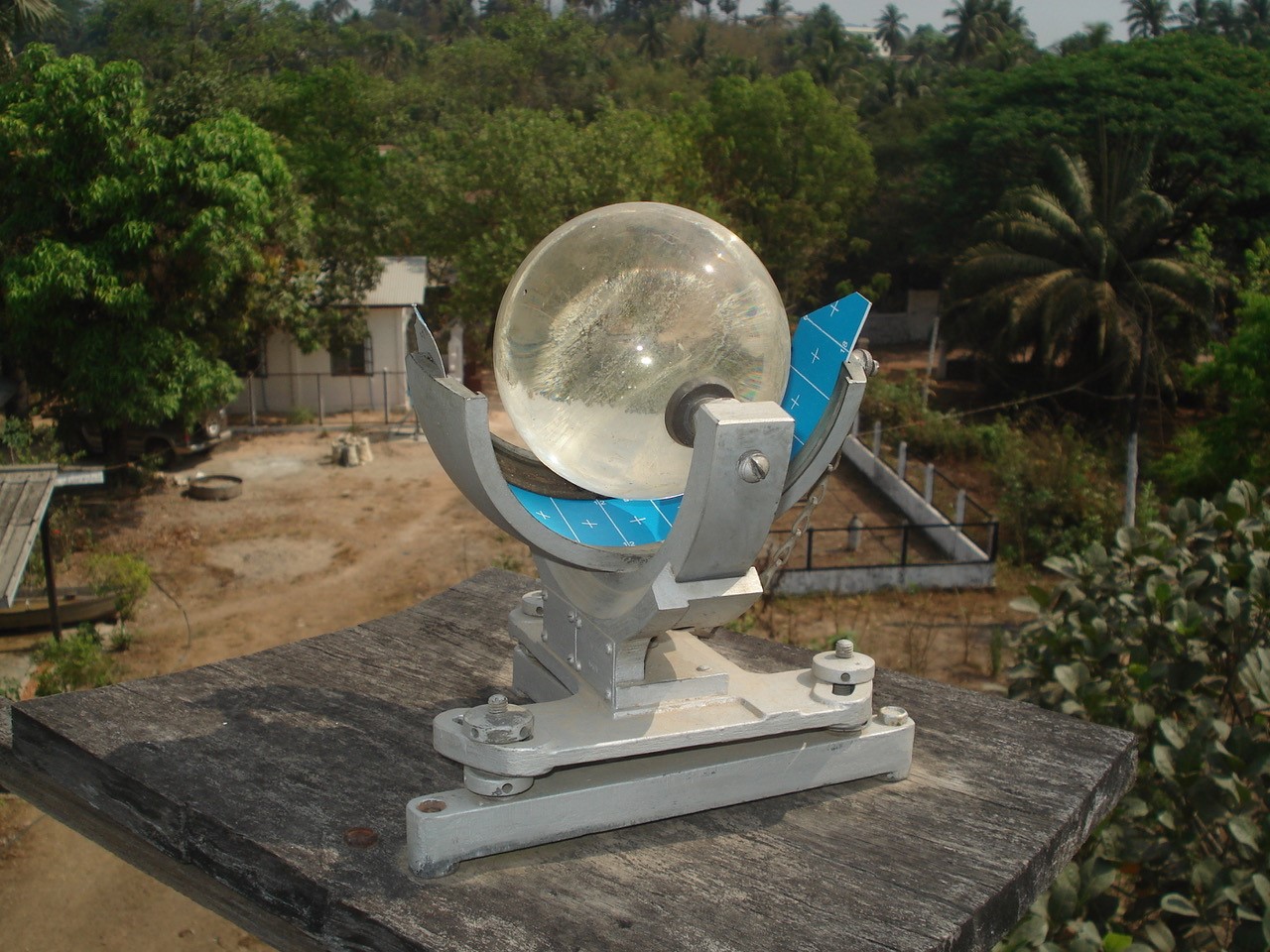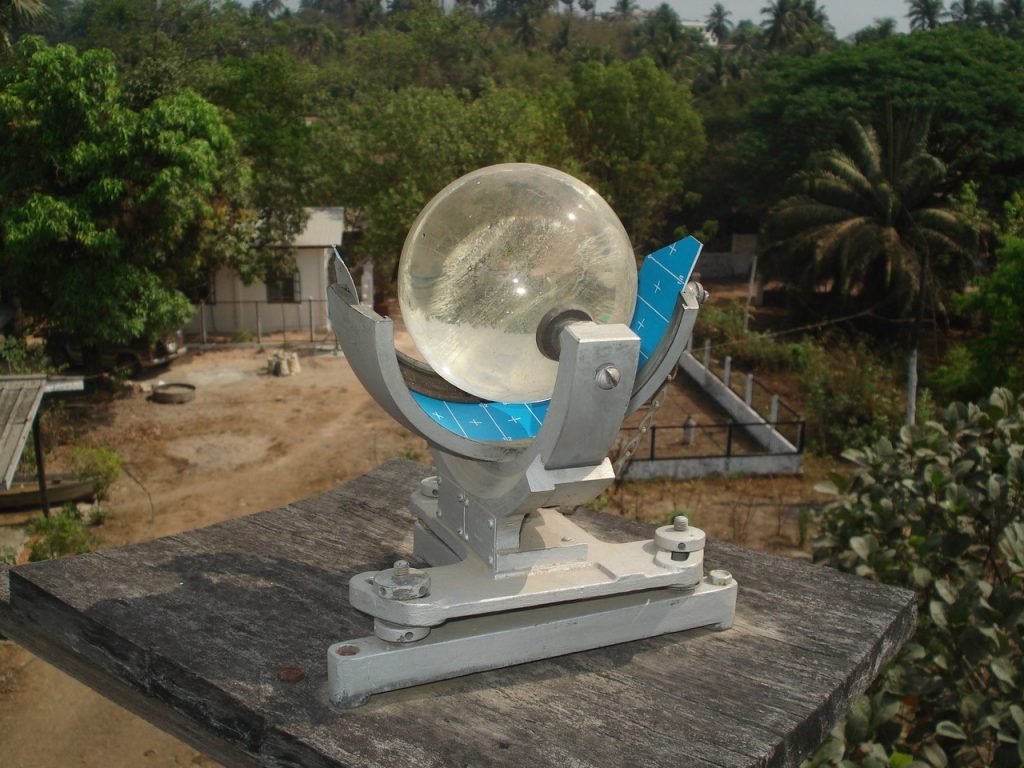Determining sunshine duration 130 years ago meant polishing the old crystal ball and scorching holes in strips of card. While sounding mystical the Campbell-Stokes recorder was cutting edge for its time. Due to the lack of moving parts, the Cambell-Stokes recorder was a reliable method to measure and record sunshine duration. Albeit a little inaccurately.

In 1853, John Francis Campbell devised the first sunshine recorder. Sir George Gabriel Stokes then modified it in 1879. Campbell devised the idea of a glass sphere filled with water to act as a lens to focus sunlight and scorch a wooden surface. Originally the wall of the sphere’s wooden container. Later, Campbell improved the design by changing the water-filled sphere to a solid glass sphere. While novel, the basic design had limited use as the repeated scorch marks on the same bowl could not provide a clear measurement of the sunshine received.
Several people, including Campbell himself, experimented with the idea of using a replaceable strip of material to more accurately measure daily sunshine. However, it was George Gabriel Stokes who ran with the idea of removable card strips and produced the design which is commonly seen today. By suspending the ball in metal clamps and making a metal ring with grooves in to firmly hold the card, Stokes improved the design into one which produced measurable and accurate results. In fact, modern designs have deviated little from the original. However, standardisation has been introduced by the World Meteorological Organisation (WMO) to ensure worldwide measurements are comparable.
Measuring sunshine duration – how it works

When sunshine is present the glass ball would focus the rays and burn a hole through a strip of photosensitive card. As the sun moves across the sky a corresponding hole would be made in the card. No sunshine means no hole. Low-intensity sunshine (potentially at sunrise and sunset or partial clouding) may only produce scorching to the card.
Different shaped strips of card are used to account for the change in the Sun’s position in the sky throughout the year. Typically 3 shapes are available.
At the end of each day, the card would be removed. The reader would measure the burn holes. The length of the holes made in the card would indicate duration. Over time tools became available to improve the accuracy of the reading.
Disadvantages
While ingenious for its time, the Campbell-Stokes recorder has several drawbacks. Firstly, the lower irradiance at sunset and sunrise sometimes meant the card was not fully burned. On days with patchy sunshine, the card reader has to make interpretations. These interpretations could cause great discrepancies in the sunshine duration. Other factors like rain damaging the card and snow/frost covering the crystal added further inaccuracies.
New and improved
New instruments were developed to meet the rising demand for accurate and complete data.
Nowadays, sunshine duration sensors like the Kipp and Zonen CSD 3 are commonly used along with pyranometers and pyrheliometers. These provide extremely accurate data, with which sunshine duration calculations can be made.
For a more detailed history of the Campbell-Stokes recorder we would refer you to the Royal Metrological Society’s website:




